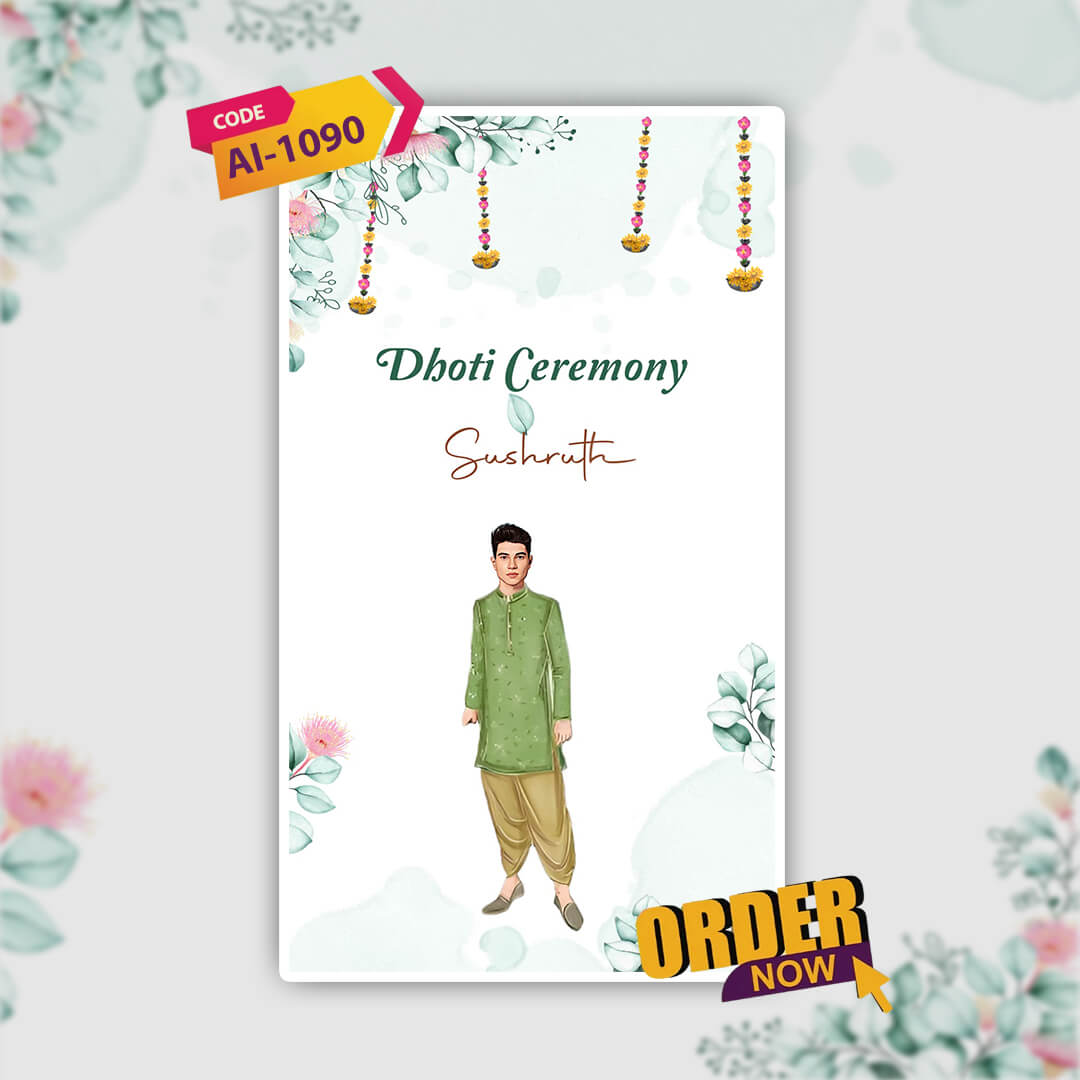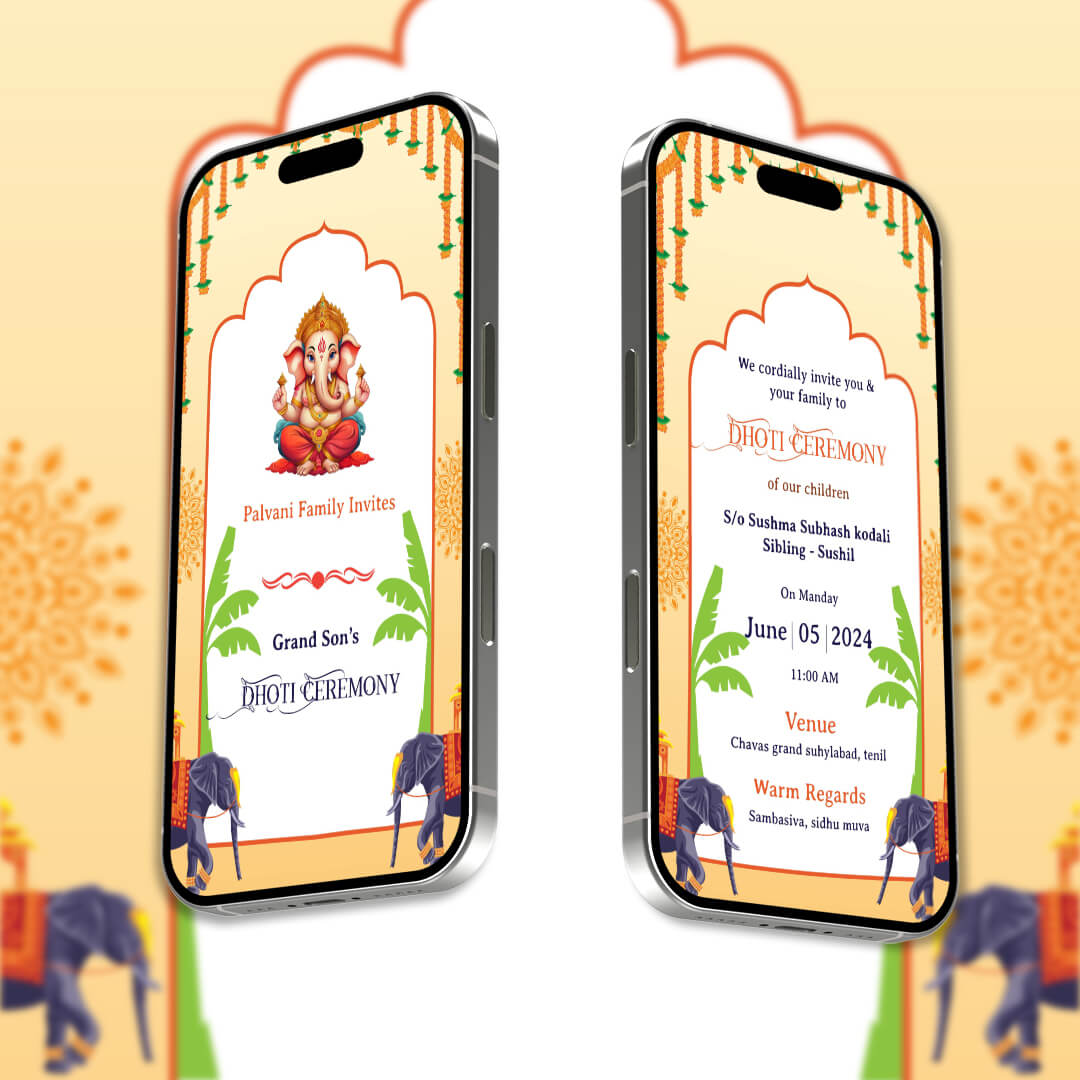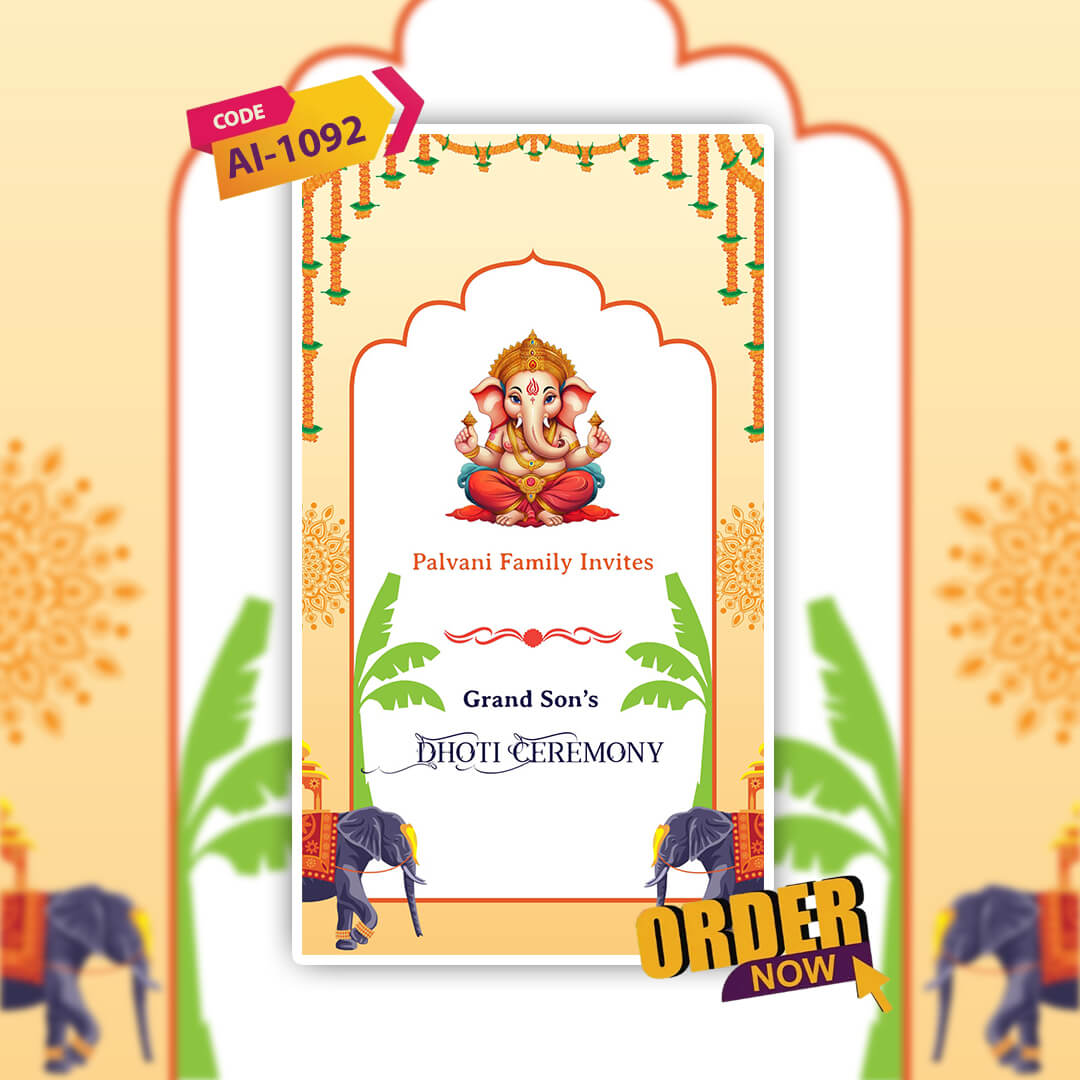Dhoti Ceremony: Meaning, Rituals, Preparations, and Modern Invitations

The Dhoti Ceremony, known as Upanayanam or Veshti Ceremony in some regions, is an important milestone in Indian tradition. It symbolizes the transition of a young boy into a stage of learning, discipline, and spiritual awareness. Typically performed between the ages of 5 and 12, the ceremony is considered a sacred initiation into responsibilities and cultural values. Families celebrate this occasion with rituals, prayers, and a grand gathering of relatives and friends. While customs vary across regions, the central meaning remains the same: the child’s first formal step into cultural and spiritual life.
Significance of the Dhoti Ceremony
The essence of the Dhoti Ceremony lies in its spiritual symbolism. When a young boy first wears a dhoti, it represents purity and the acceptance of discipline. In many Indian households, this ceremony is a way of teaching the child respect for tradition and preparing him for spiritual growth. It is more than just a change in clothing; it is an entry into a stage of responsibility where the child begins to understand cultural practices and family values.
Families often view this event as an opportunity to pass down age-old traditions. The blessings of elders, chanting of mantras, and sacred rituals help connect the child to his cultural roots. This moment is remembered for a lifetime, as it reflects both family pride and devotion to heritage.

Traditional Rituals of the Dhoti Ceremony
The rituals in a Dhoti Ceremony vary depending on the region, but they typically follow a sequence rooted in Vedic traditions. A priest leads the family and child through the sacred rituals, starting with prayers to Lord Ganesha to remove obstacles. This is followed by offerings to deities and blessings for the boy’s future.
The central moment of the ceremony is when the child wears the dhoti for the first time. Elders guide him in tying it properly, while mantras are chanted. The child is then formally introduced to sacred texts and spiritual practices. In some traditions, the boy is also taught his first verses, symbolizing the beginning of his educational journey.
After the rituals, family members and guests bless the child with gifts, prayers, and words of encouragement. The ceremony concludes with a feast where traditional food is served to everyone present. This marks not only the completion of the spiritual initiation but also the joy of community and family togetherness.
Preparations for the Dhoti Ceremony
Organizing a Dhoti Ceremony requires thoughtful preparation. Families usually begin by fixing an auspicious date, often decided in consultation with an astrologer or priest. Invitations are then sent to relatives, friends, and community members to join in the celebration.
The house or venue is decorated with flowers, rangoli, and traditional lamps, creating a festive and spiritual atmosphere. Ceremonial items such as pooja thalis, sacred threads, fruits, coconuts, and flowers are prepared in advance. A priest is arranged to guide the rituals and ensure they are performed according to tradition.
The child’s attire is another important element. A white or cream-colored dhoti is chosen, symbolizing purity. In some families, the boy also wears a silk upper garment, and jewelry may be added for a festive appearance. Alongside the rituals, families plan the menu for the feast, often including traditional sweets, rice dishes, and festive delicacies.

Modern Trends: Digital Invitations for Dhoti Ceremony
While the essence of the Dhoti Ceremony remains traditional, families are increasingly adopting modern ways to make the occasion memorable. One such trend is the use of digital invitations. Video invitations are a convenient and creative way to invite loved ones while maintaining the festive spirit. They are easy to customize, eco-friendly, and can be instantly shared via WhatsApp, email, or social media.
Several beautifully designed digital invites are available online. For example, families can explore templates like the Dhoti Ceremony Video Invitation AI-1092 or the Dhoti Ceremony Video Invitation AI-1093. These designs combine cultural motifs with modern aesthetics, making them perfect for this special occasion.
The shift to video invitations also reflects a growing awareness of sustainability. Instead of printing hundreds of paper cards, families can now share animated, interactive invites that leave a lasting impression on recipients. This way, tradition meets technology in a harmonious balance.
Regional Variations of the Ceremony
India’s cultural diversity is beautifully reflected in the way Dhoti Ceremonies are celebrated across different states. In Tamil Nadu, the ceremony is often called the “Veshti Ceremony” and involves elaborate rituals performed in temples or ancestral homes. In Andhra Pradesh and Telangana, it is known as the “Upanayanam” and emphasizes reciting Vedic mantras. Karnataka and Kerala families also observe the ceremony with equal reverence, adding their regional customs to the rituals.
Despite differences in language and traditions, the core symbolism remains the same: the boy’s initiation into a new phase of life. These regional touches add richness to the ceremony, showcasing the diversity and unity of Indian culture.
Hosting a Memorable Dhoti Ceremony
A successful Dhoti Ceremony blends devotion with celebration. While the rituals are the most sacred part, the overall experience is enriched by thoughtful planning. Choosing a comfortable venue ensures guests feel welcome. Adding traditional music or cultural dance performances creates an engaging environment. Families also invest in photography and videography to capture every moment, making memories that last a lifetime.
Food plays an equally important role in the event. A mix of traditional delicacies like sweets, rice dishes, and curries, along with refreshments for guests, ensures everyone enjoys the feast. Families also prepare return gifts, such as small idols, sweets, or traditional keepsakes, as a token of gratitude for guests attending the ceremony.
When tradition is respected and modern touches are added, the Dhoti Ceremony becomes more than just a ritual it becomes a cherished celebration of culture, family, and values.
Conclusion
The Dhoti Ceremony is a timeless tradition that bridges the past and present. It marks a child’s entry into a phase of learning, discipline, and spiritual awareness. While the rituals and customs give it sacred meaning, the joyous celebrations with family and friends add to its charm. Modern practices like digital invitations allow families to celebrate in eco-friendly and innovative ways, without losing the cultural essence.
Ultimately, the Dhoti Ceremony is not just about wearing traditional attire it is about embracing values, respecting heritage, and creating lifelong memories. For families, it is an opportunity to honor their roots, bless the next generation, and celebrate togetherness in a truly meaningful way.
